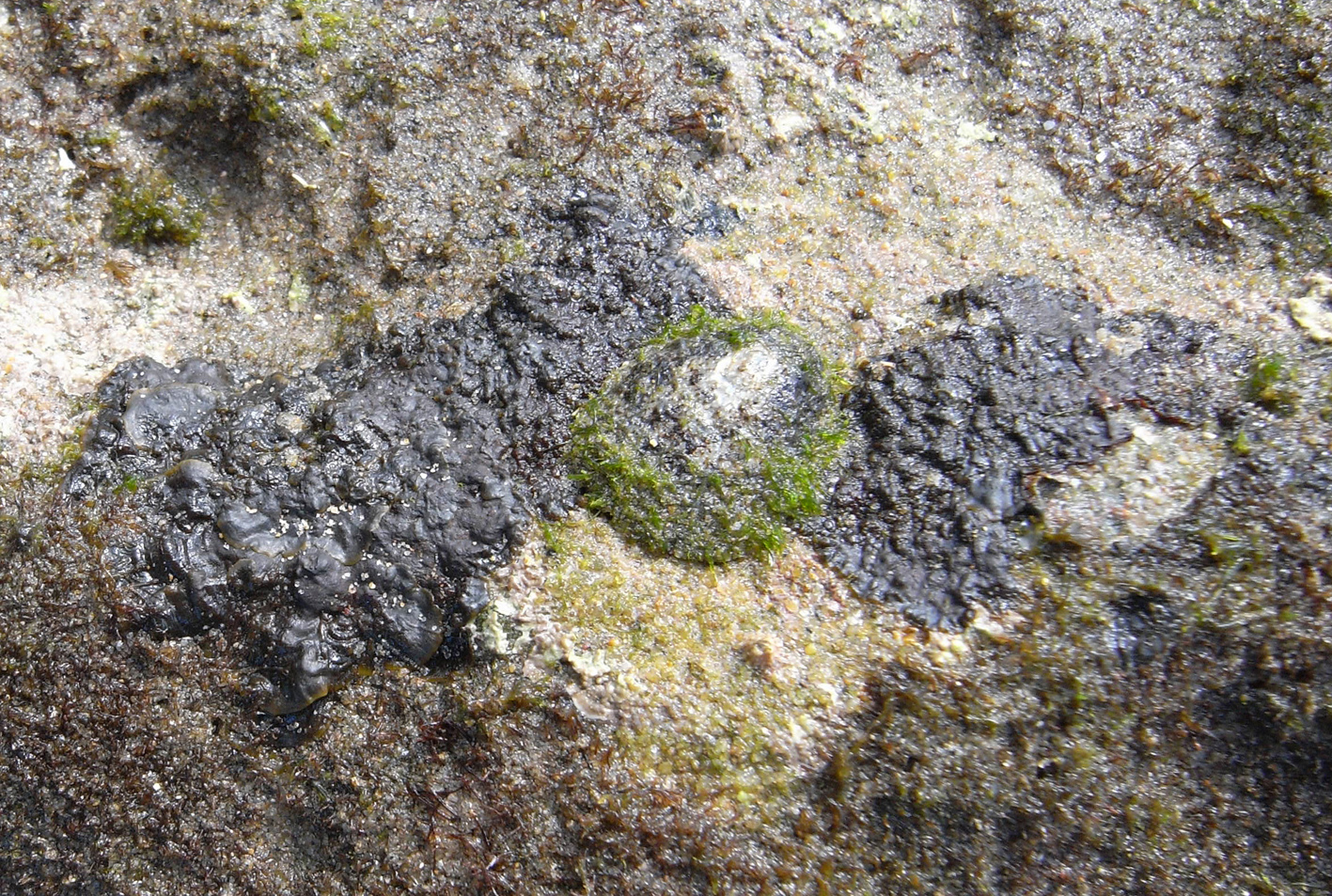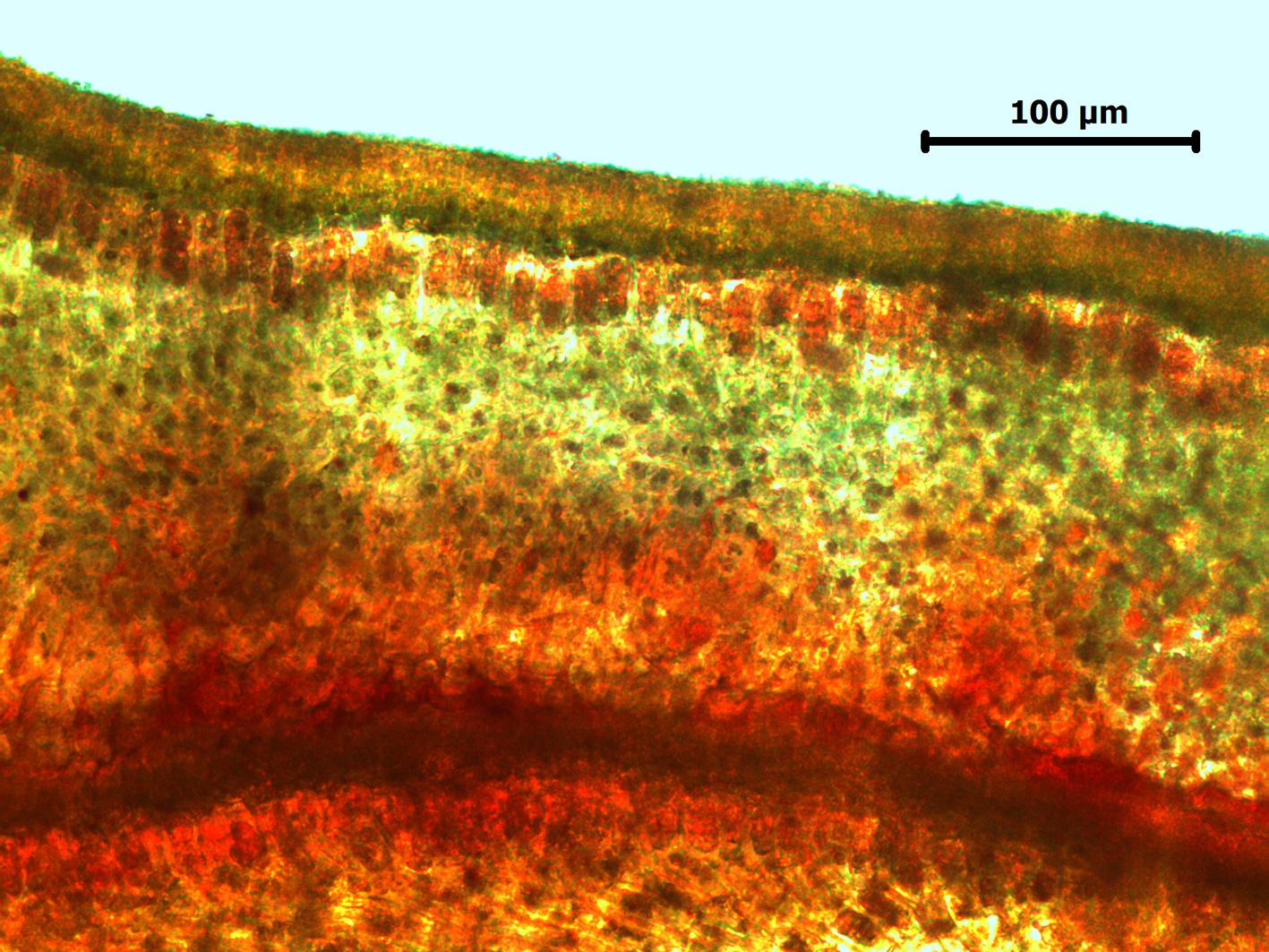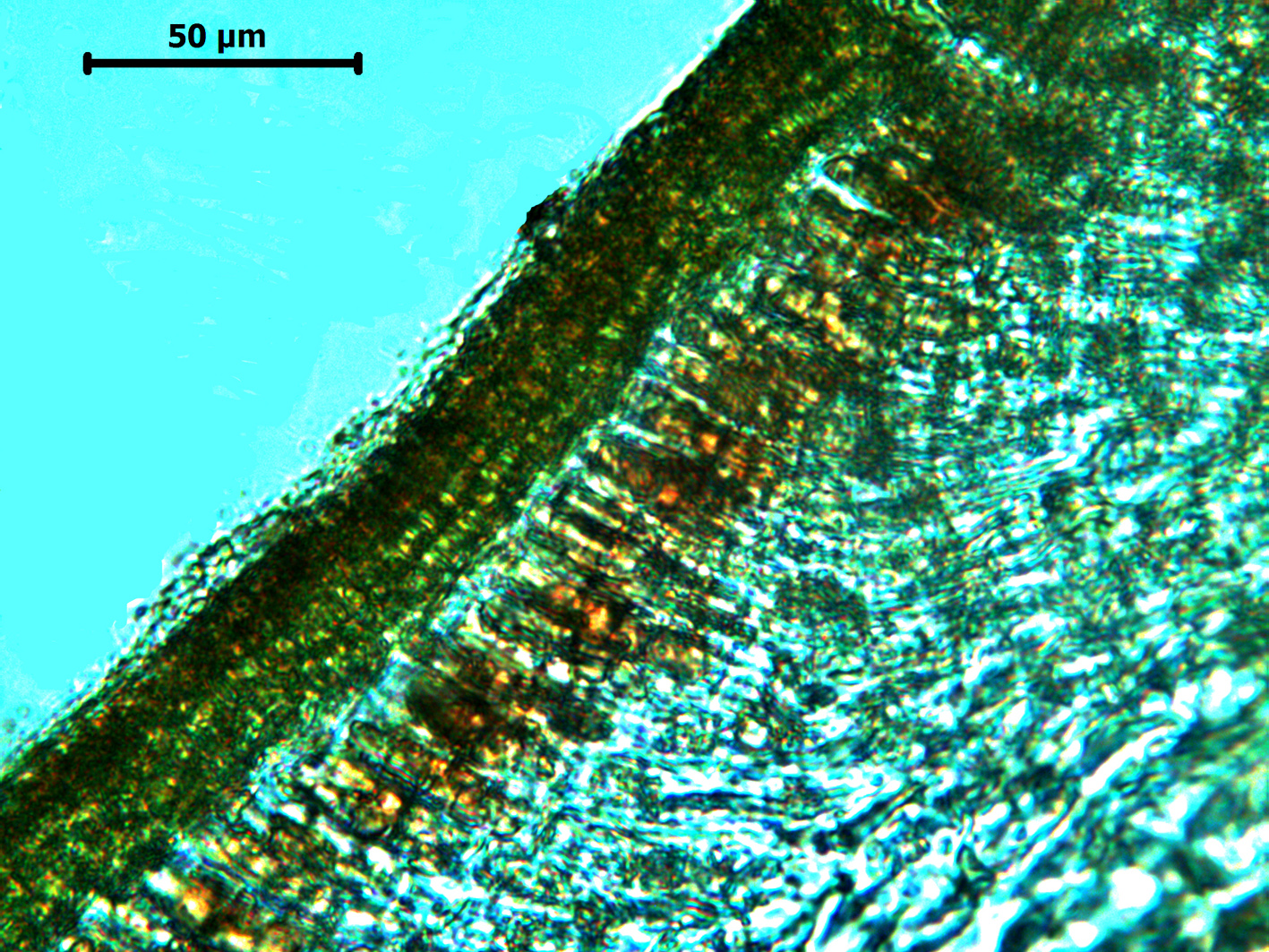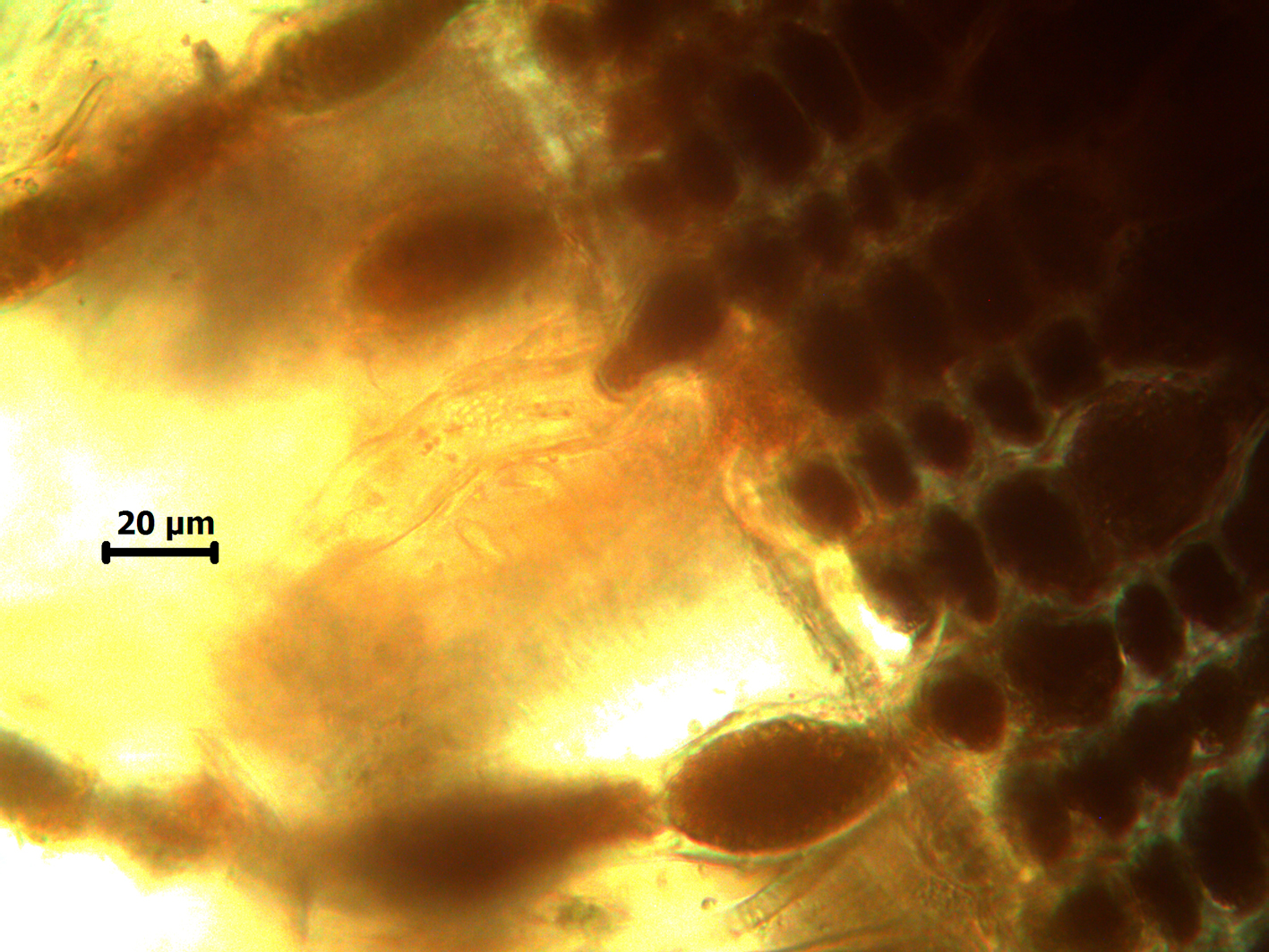Seaweeds of the South African South Coast


Order Ralfsiales
Family Neoralfsiaceae
This family was recently erected (Lim and Kawai in Lim et al. 2007) to accommodate the new genus Neoralfsia, which is based in Neoralfsia expansa (formerly Ralfsia expansa).
Neoralfsia expansa (J.Agardh) P.-E.Lim & H.Kawai ex Cormaci & G.Furnari in Cormaci et al. 2012: 510
Plants crustose, adhering closely to substratum, medium to dark brown, up to 10 cm across, varying from a smooth crust to patches and overlapping lobes. Crusts up to ca 300 µm thick, comprising a closely adherent basal layer of horizontal filaments attached by multicellular rhizoids, basal filaments bearing a distinct layer of erect filaments; erect filaments 12-15 µm in diameter and up to 15 cells long. Tufts of phaeophycean hairs arising from pits in thallus and scattered over surface. Unilocular sporangia in sori, clavate, up to 7-120 µm long and 25-30 µm wide, borne on 3-6 celled pedicels; surrounded by sterile paraphyses. Plurilocular sporangia in superficial sori, up to 50-60 µm long x 5 µm wide, on 2-4 stalk cells and with a sterile apical dome-shaped cell.
Collections, ecology and regional distribution
Common in the eulittoral, epilithic but also on animal shells. Recorded from the Cape Padrone area through to northern Kwazulu-Natal (38-58).
World distribution: Widespread in tropical and warm temperate seas, and also recorded from Namibia, Mozambique, but some records may represent undescribed species (Guiry & Guiry 2017).
Type locality: Veracruz, Mexico (Silva et al.1996).
Note: Neoralfsia expansa has a distinct cortex that in cross section is visible as a zone of erect filaments above the upward-curving medullary filaments. Ralfsia verrucosa comprises adherent filaments that curve upward, so that there is no distinct cortical zone. Also, unilocular sporangia in the former are borne on pedicels of 3-6 cells, while in R. verrucosa these sporangia are sessile or on a single-celled pedical. The two genera are distinct in terms of rbcl DNA sequences (see Lim et al. 2007).

Neoralfsia expansa, Mission Rocks, northern KwaZulu-Natal.

Neoralfsia expansa, Mission Rocks, northern KwaZulu-Nata, xs of crust growing on top of another crust, showing cortex and medulla.

Neoralfsia expansa, longitudinal section showing upward-curving medulla with cortex above.

Neoralfsia expansa, xs showing attaching rhizoids growing from basal layer.
References Neoralfsia expansa
Cormaci, M., Furnari, G., Catra, M., Alongi, G. & Giaccone, G. 2012. Erratum. Flora marina bentonica del Mediterraneo: Phaeophyceae. Bollettino dell'Accademia Gioenia 45: 509-510.
M.D. Guiry in Guiry, M.D. & Guiry, G.M. 2017. AlgaeBase. World-wide electronic publication, National University of Ireland, Galway. http://www.algaebase.org; searched on 13 October 2017.
Lim, P.-E., Sakaguchi, M., Hanyuda, T., Kogame, K., Phang, S.-M. & Kawai, H. (2007). Molecular phylogeny of crustose brown algae (Ralfsiales, Phaeophyceae) inferred from rbcL sequences resulting in the proposal for Neoralfsiaceae fam. nov.. Phycologia 46(4): 456-466.
Silva, P.C., Basson, P.W. & Moe, R.L. (1996). Catalogue of the benthic marine algae of the Indian Ocean. University of California Publications in Botany 79: 1-1259.
Cite this record as:
Anderson RJ, Stegenga H, Bolton JJ. 2016. Seaweeds of the South African South Coast.
World Wide Web electronic publication, University of Cape Town, http://southafrseaweeds.uct.ac.za; Accessed on 07 January 2026.